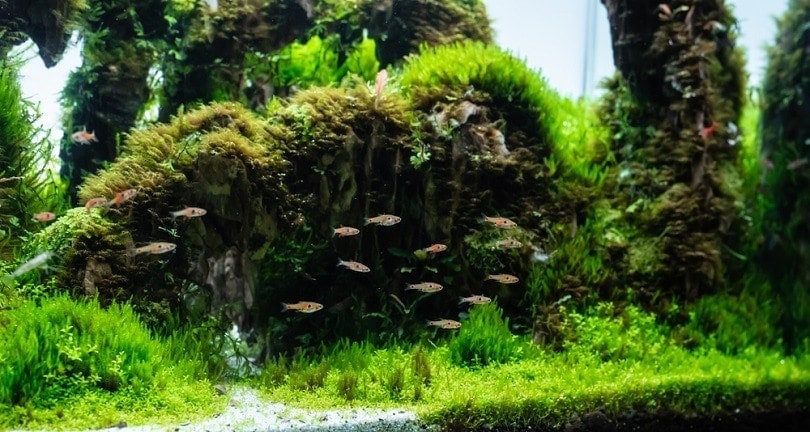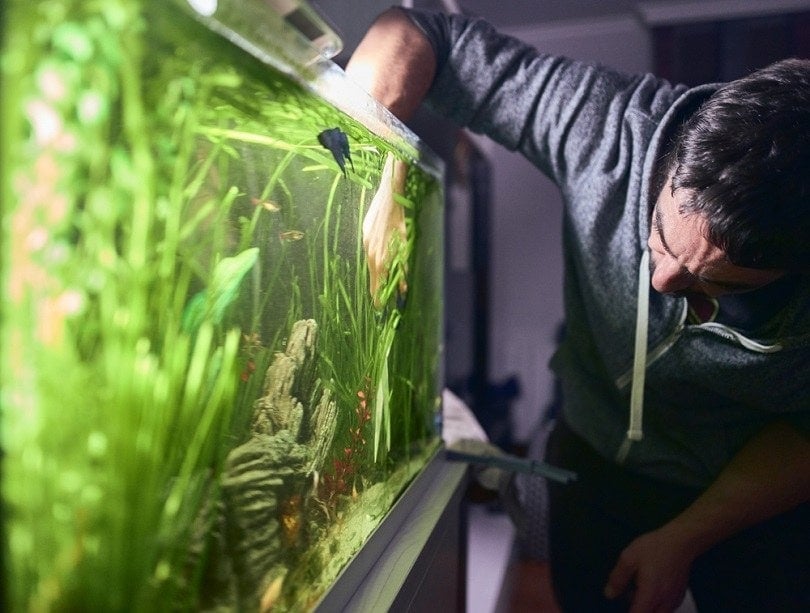How Big Do Flowerhorn Cichlids Get? Average Size & Growth Chart

Updated on
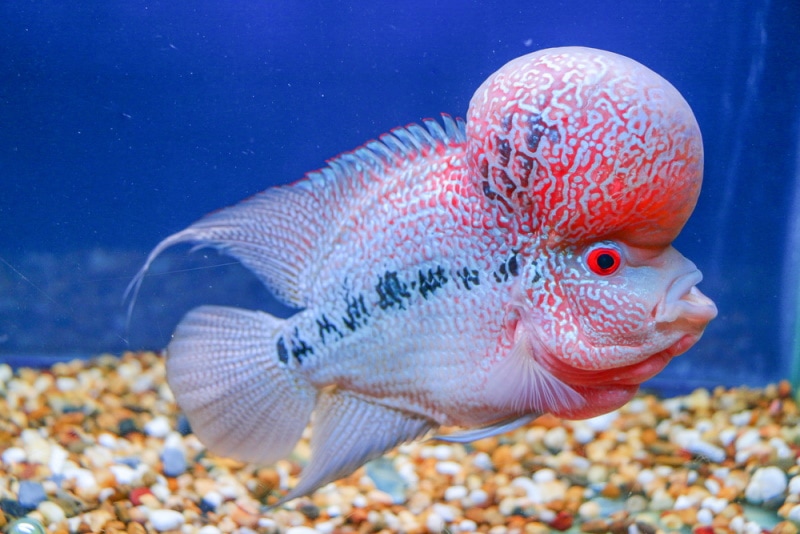
Flowerhorn Cichlids are brightly colored tropical fish. Color aside, they’re impossible to miss because of the large, fleshy growth the Flowerhorn Cichlid has on its forehead. These fish can get quite large, even in the world of Cichlids within the aquarium trade, at 16 inches. They get large enough that the minimum tank size for a single Flowerhorn Cichlid is 75 gallons. For a pair, they need at least 150 gallons of space to share.
In small environments, they can be exceptionally territorial and stressed, so providing enough space is essential for maintaining the health and overall well-being of a Flowerhorn Cichlid.
Preparation for bringing home a Flowerhorn Cichlid will ensure you have the correct setup and that you will be able to provide an appropriate home to your fish. Here’s everything you need to know about these big, colorful fish.
Facts About Flowerhorn Cichlids
- The growth on the head of Flowerhorn Cichlids is called a “nuchal hump”. They are also sometimes referred to as “kok”.
- Flowerhorn Cichlids are not naturally occurring fish. They are a hybrid fish that was developed by people. They can be found in the wild, but wild Flowerhorn Cichlids are fish that were released from captive life into the wild. They are considered an invasive species in many areas.
- The Flowerhorn Cichlid wasn’t developed until between 1993 and 1998. They originated in Malaysia but quickly became popular in multiple countries in Asia. They are currently commonly kept in Asia, Europe, and the United States.
- There are at least five Flowerhorn Cichlid varieties available in the United States: Regular Flowerhorns, Golden Flowerhorns, Pearl-Scale Flowerhorns, Faders, and Kamfas.
- In captivity, Flowerhorn Cichlids can have a lifespan of around 10–12 years.
- Female Flowerhorn Cichlids will lay eggs monthly, so if you’re unsure if your fish is male or female, you can wait to see if eggs are laid. Females will lay eggs, even when a male is not present in the environment.
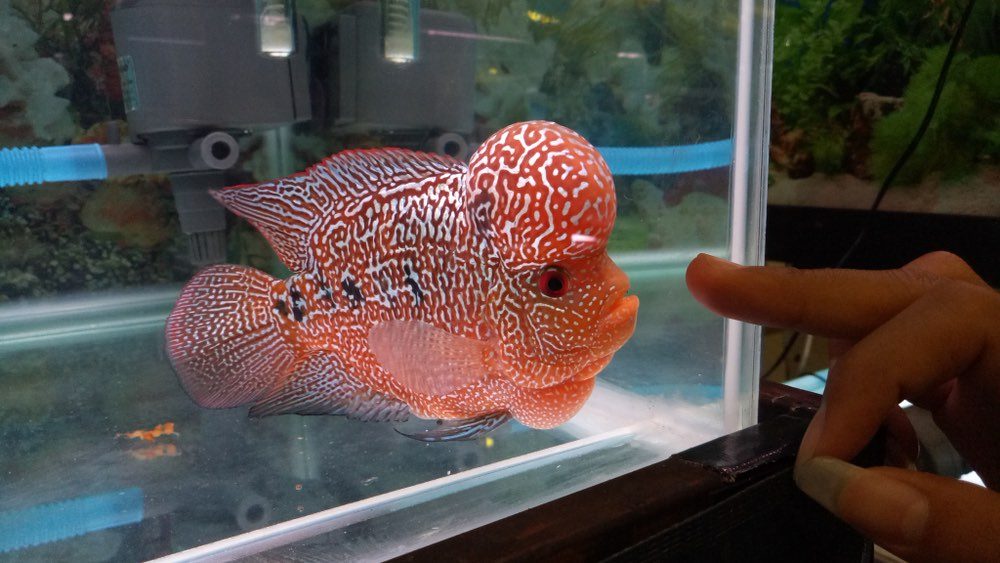
Flowerhorn Cichlids Size & Growth Chart
Flowerhorns have a rapid growth rate, especially within the first year of life. They grow around 0.75–0.8 inches per month for the first year or so. They will grow more than half of their adult size in the first year of life with proper care and good nutrition.
The growth of Flowerhorn Cichlids will typically stop once they hit their maximum size, but the maximum can vary between fish. For most Flowerhorn Cichlids in aquariums, they will only grow to around 12 inches, but they can get larger. Females tend to measure 1–2 inches smaller than males.
| Age | Length Range – Male | Length Range – Female |
| Hatchling | 1–2 inches | 1–2 inches |
| 2 months | 2.5–3.5 inches | 2–3 inches |
| 6 months | 5.5–6.5 inches | 5–6 inches |
| 12 months | 10–11.25 inches | 8–11 inches |
| 18 months | 10–14 inches | 8–12 inches |
| 24 months | 10–16 inches | 8–14 inches |
When Does a Flowerhorn Cichlid Stop Growing?
Flowerhorn Cichlids will stop growing once they reach their maximum size. They won’t continue to grow beyond their genetically determined maximum size. This means that they won’t grow throughout their lives.
Once a Flowerhorn Cichlid reaches 8–16 inches, they’ll be finished growing. Keep in mind, though, that Flowerhorn Cichlids in the wild can reach 14–16 inches, while captive Flowerhorns usually stay at 12 inches or less.
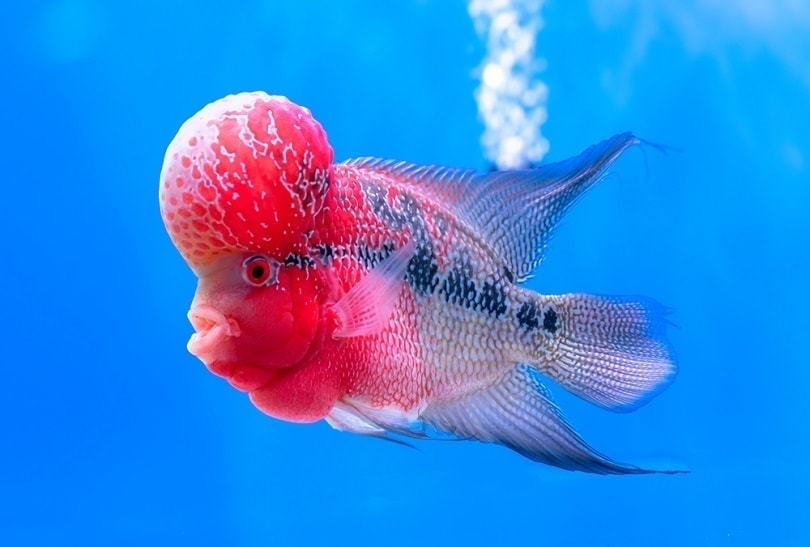
Factors Affecting the Size of Flowerhorn Cichlids
The primary factors affecting the size of Flowerhorn Cichlids are genetics, nutrition, and water quality. If a Flowerhorn isn’t receiving appropriate nutrition, then their growth may be stunted. However, their growth may catch up if their nutrition is improved.
Like all fish, poor water quality can limit the growth of a Flowerhorn Cichlid, and it can also shorten their lifespan. Ensure water quality stays high and provide appropriate filtration to support healthy growth and large size.
Ideal Diet for Maintaining a Healthy Weight
Flowerhorn Cichlids are omnivores that will eat almost anything offered to them. They have a preference for high-protein foods, though. A high-quality pellet should make up the base diet for a Flowerhorn Cichlid, but there are a variety of foods that can also be offered to them.
Bloodworms, shrimp, pieces of cooked fish, and a variety of worms, including blackworms and red wigglers, can be offered to Flowerhorns. They also like to eat foods containing spirulina algae, which is exceptionally high in plant protein and B vitamins.
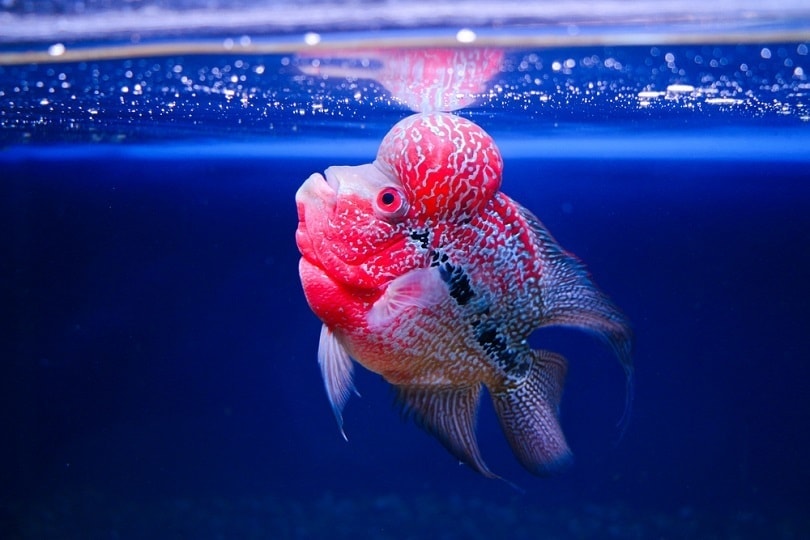
How to Measure Your Flowerhorn Cichlids
There is not a particularly easy way to measure your Flowerhorn Cichlid. They aren’t cooperative fish, so it’s best to try to measure them without having to handle them. Holding a fabric tape measure up to the glass when your fish is nearby can give you a good idea of their size. You may consider putting food in that area to keep your fish busy for a few seconds so you can get a good measurement.
It’s not recommended due to the risks, but you can also gently lift your Flowerhorn Cichlid out of the water and measure them. If you choose to try this, wash your hands thoroughly before and after handling the fish and hold them just above the water, so that if you drop them or they jump out of your hands, they won’t hit the ground.
Conclusion
Flowerhorn Cichlids are large, aggressive fish that can reach up to 16 inches in length. They are an invasive species in many areas, and their aggression and voracious appetite can make them a real threat to native ecosystems. Keeping Flowerhorns in an aquarium requires a large tank and a careful selection of tank mates. In some cases, not having tank mates is the way to go with these fish.
Featured Image Credit: luis2499, Shutterstock


